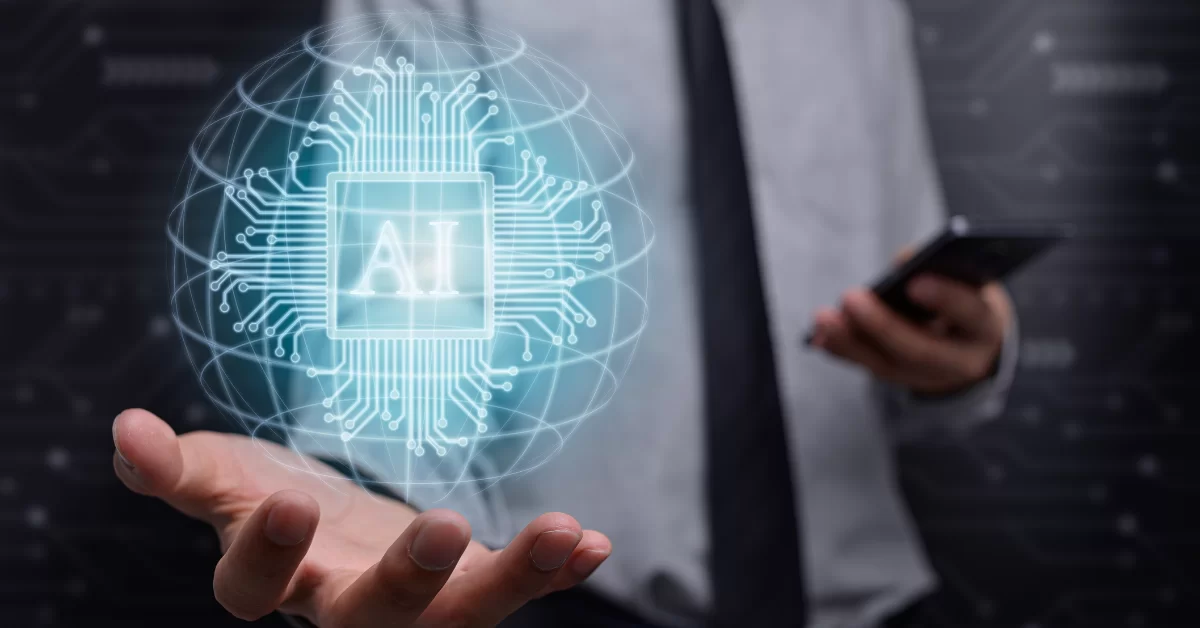How to Build Intelligent Systems: A Guide to AI Programming with Python
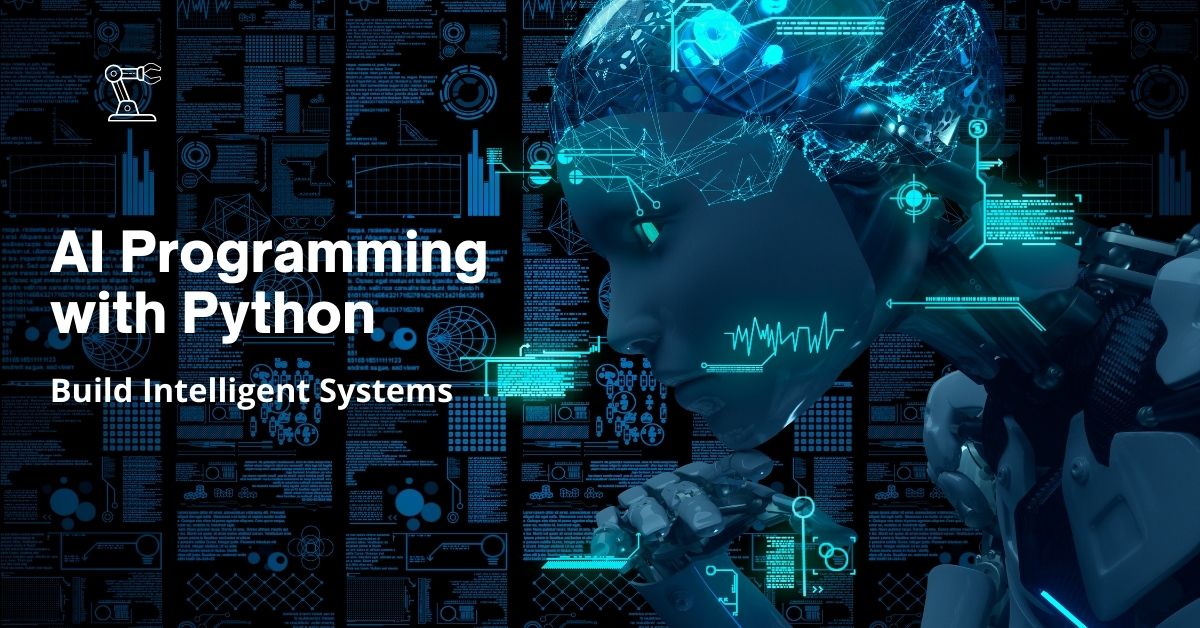
4 min read | By Postpublisher P | 18 July 2023 | Frameworks
What if machines can think? Science fiction movies are starting to make sense, aren’t they?
The first artificial intelligence program, the Logic Theorist, was engineered to perform automated reasoning. It is considered to be the first human invention that could think at the human level. It was built to mimic the solving skills of human mathematicians.
Do you know in which language it was built? Information Processing Language (IPL). After that came many AI programming languages like List Processor (LISP), PROLOG, Python, R, JAVA, C++, and ADA, among others.
In this article, we will have a complete in-depth overview of AI programming with Python and how to build intelligent systems with this most preferred AI programming language.
Python for Artificial Intelligence
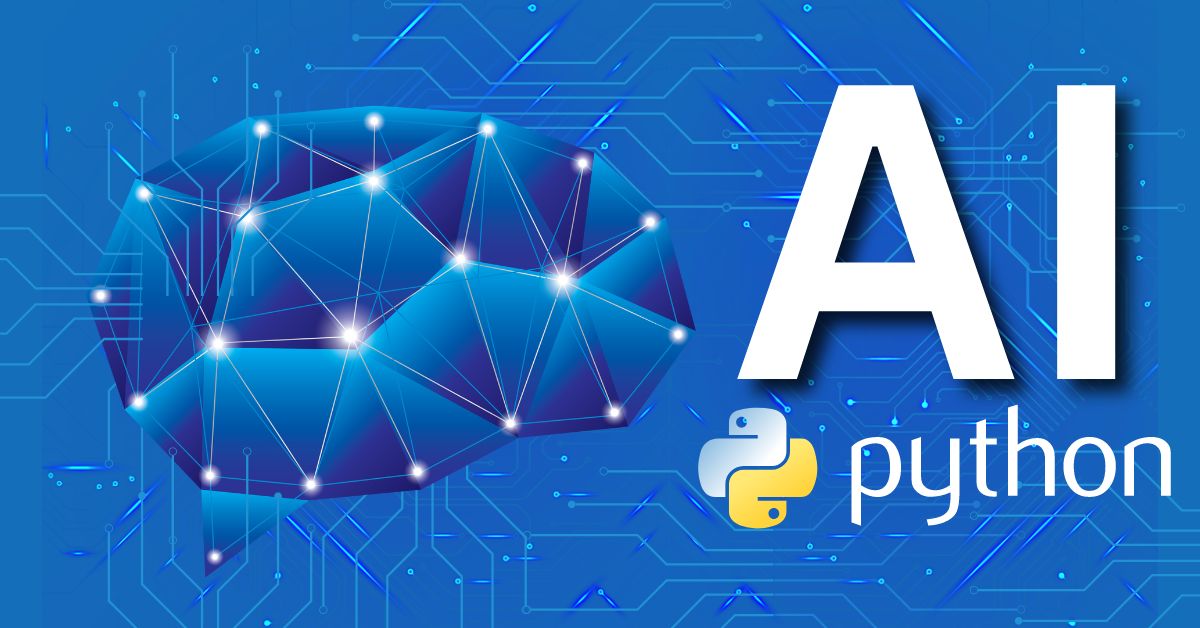
Python is widely used in the field of artificial intelligence because of its simplicity and readability. If you’re a beginner, then no wonder why you love working with Python. You will come across a variety of libraries and frameworks, making it easier to develop AI applications.
Is artificial intelligence programming with Python new? No, it has been used for several decades, with the initial development in the late 1980s and gaining popularity in the 1990s. However, Python’s extensive usage in AI started to grow in the early 2000s.
One crucial milestone in Python’s adoption of AI was the release of the NumPy library in 2006. It was crucial for scientific computing and machine learning tasks as it became the foundation for many subsequent AI libraries and frameworks.
The next significant development occurred in 2011 with the release of TensorFlow. It’s an open-source library for deep learning developed by Google. TensorFlow made it easier to build and train deep neural networks, which further popularised Python as a language for AI.
Since then, Python has been widely used in various AI domains, including natural language processing, computer vision, robotics, and more. Now Python is the go-to language for many AI researchers, developers, and practitioners.
Benefits of Artificial Intelligence With Python
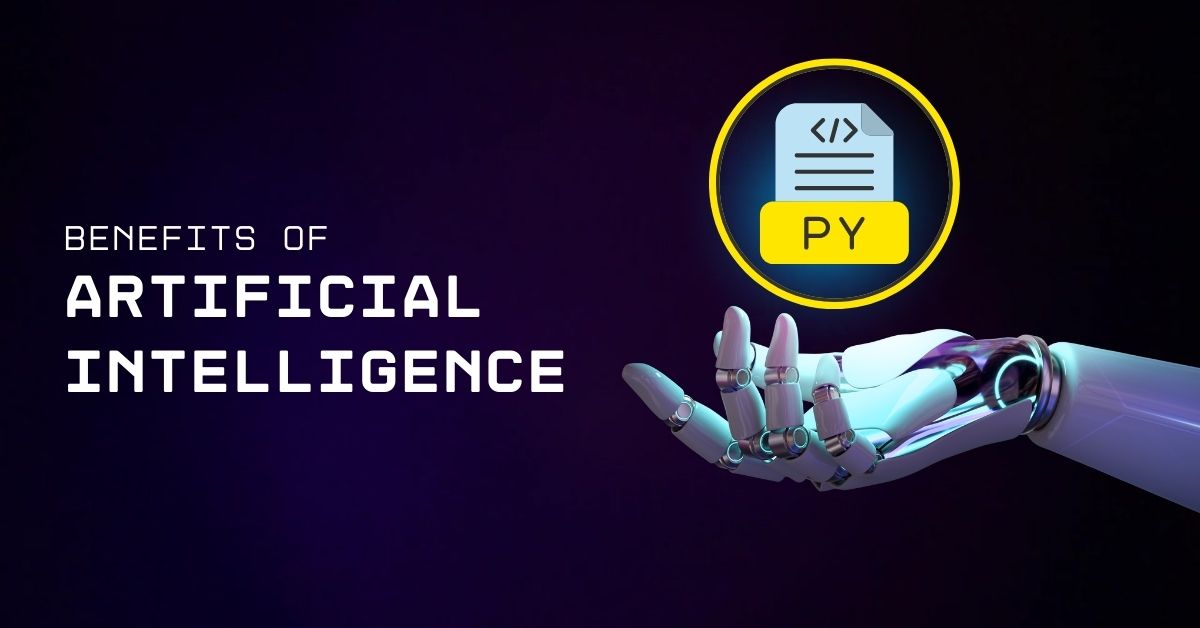
✔️𝐄𝐚𝐬𝐲 𝐭𝐨 𝐥𝐞𝐚𝐫𝐧 𝐚𝐧𝐝 𝐮𝐬𝐞: Python has a simple syntax and a clean code structure that makes it easier to understand and write AI algorithms. You can now focus on solving the AI problem rather than getting headaches in complex programming.
✔️𝐀 𝐯𝐚𝐬𝐭 𝐞𝐜𝐨𝐬𝐲𝐬𝐭𝐞𝐦 𝐨𝐟 𝐥𝐢𝐛𝐫𝐚𝐫𝐢𝐞𝐬 𝐚𝐧𝐝 𝐟𝐫𝐚𝐦𝐞𝐰𝐨𝐫𝐤𝐬: You can save a lot of your time and effort using the libraries like TensorFlow, PyTorch, and Scikit-learn. Because here, you can get access to powerful tools, pre-built algorithms, ready-to-use models, and efficient data.
✔️𝐒𝐭𝐫𝐨𝐧𝐠 𝐜𝐨𝐦𝐦𝐮𝐧𝐢𝐭𝐲 𝐬𝐮𝐩𝐩𝐨𝐫𝐭: Who doesn’t want support from someone who has already gone through the challenges you are facing now? There are a large group of developers who regularly contribute to having an active community. You can use the resources, tutorials, and forums to learn and troubleshoot your issues.
✔️𝐈𝐧𝐭𝐞𝐠𝐫𝐚𝐭𝐢𝐨𝐧 𝐰𝐢𝐭𝐡 𝐨𝐭𝐡𝐞𝐫 𝐥𝐚𝐧𝐠𝐮𝐚𝐠𝐞𝐬: Without a doubt, flexibility is a major plus. Python can seamlessly integrate with other languages like C, C++, and Java. This allows you to use the existing AI libraries or modules written in other languages within your Python projects.
✔️𝐕𝐞𝐫𝐬𝐚𝐭𝐢𝐥𝐢𝐭𝐲: If there is a one size fits all programming language, then Python should rank first. Whether it’s natural language processing, computer vision, robotics, or data analysis, Python is there to help.
AI Programming with Python to Build Intelligent Systems
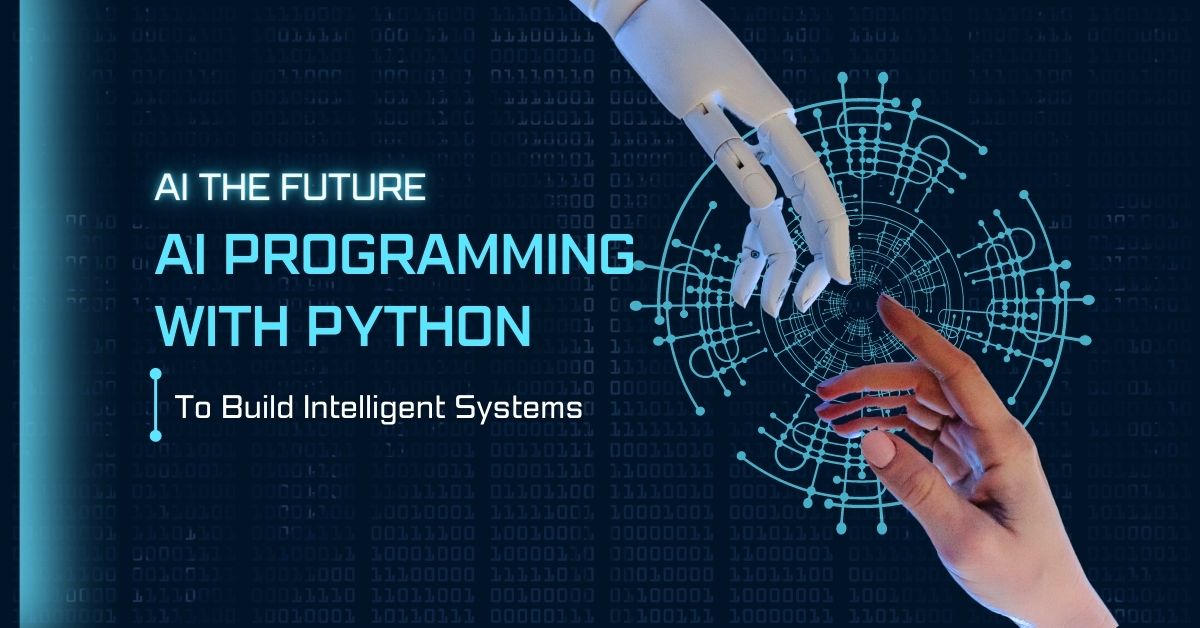
A system is said to be intelligent only if it’s able to process data, learn from it, reason & make appropriate decisions while communicating the decisions with external users. For this to happen, there are several components that work simultaneously.
As a Python programmer, it is essential to have a complete idea about these to excel in building intelligent systems. Be it voice assistants or self-driving cars, these AI components are integrated to bring intelligence. We shall discuss the important components in detail.
⒈ Data Collection and PreProcessing
Data collection and preprocessing is the earliest stage of the AI development pipeline in building intelligent systems. It involves gathering relevant data from various sources, for example, data from eCommerce, smart homes, healthcare, etc.
The data collected undergoes the following preprocessing steps.
➤ 𝐃𝐚𝐭𝐚 𝐂𝐥𝐞𝐚𝐧𝐢𝐧𝐠: Removing irrelevant or duplicate data points.
➤ 𝐃𝐚𝐭𝐚 𝐓𝐫𝐚𝐧𝐬𝐟𝐨𝐫𝐦𝐚𝐭𝐢𝐨𝐧: Data is converted into a suitable format for analysis.
➤ 𝐃𝐚𝐭𝐚 𝐈𝐧𝐭𝐞𝐠𝐫𝐚𝐭𝐢𝐨𝐧: Merging and consolidating datasets with matching criteria.
➤ 𝐃𝐚𝐭𝐚 𝐒𝐚𝐦𝐩𝐥𝐢𝐧𝐠: Data sampling is used when the dataset is too large or imbalanced.
⒉ Machine Learning (ML)
Machine learning algorithms form the core of an intelligent system. It is the ability of a system to learn and improve from data without a developer commanding it. The machine learning mechanism enables the system to make predictions by recognizing patterns based on the information it has learned. Here is how it does:
➤ 𝐃𝐚𝐭𝐚 𝐚𝐬 𝐈𝐧𝐩𝐮𝐭: The input data (numerical values, text, images) is required to learn and make predictions.
➤ 𝐓𝐫𝐚𝐢𝐧𝐢𝐧𝐠 𝐏𝐡𝐚𝐬𝐞: The ML model is exposed to a large set of labelled or unlabeled data. The model analyses the relationships in the data to learn from it.
➤ 𝐌𝐨𝐝𝐞𝐥 𝐁𝐮𝐢𝐥𝐝𝐢𝐧𝐠: The model builds a representation of the patterns (mathematical algorithms) it has learned from the training data to make decisions.
➤ 𝐓𝐞𝐬𝐭𝐢𝐧𝐠 𝐚𝐧𝐝 𝐄𝐯𝐚𝐥𝐮𝐚𝐭𝐢𝐨𝐧: After the model is built, it is tested using a separate set of data called the testing dataset to measure its accuracy.
➤ 𝐈𝐧𝐟𝐞𝐫𝐞𝐧𝐜𝐞: Once the model is evaluated, it can be used to perform tasks on new data that was not part of the training. The model applies the learned patterns to generate predictions.
➤ 𝐅𝐞𝐞𝐝𝐛𝐚𝐜𝐤 𝐋𝐨𝐨𝐩: The system’s performance is improved using the feedback loop to continuously learn and refine its predictions or decisions over time.
⒊ Deep Learning and Neural Networks
Just like the human brain, these models can learn and make complex decisions. True to its name – neural network, it is developed by mimicking the structure of the human neurons. Here’s how these neural networks help with deep learning.
➤ 𝐍𝐞𝐮𝐫𝐚𝐥 𝐍𝐞𝐭𝐰𝐨𝐫𝐤𝐬: Neural networks consist of interconnected nodes (neurons) that receive input, process it, and produce an output.
➤ 𝐋𝐞𝐚𝐫𝐧𝐢𝐧𝐠 𝐟𝐫𝐨𝐦 𝐃𝐚𝐭𝐚: These neural networks learn from large datasets during training.
➤ 𝐃𝐞𝐞𝐩 𝐋𝐞𝐚𝐫𝐧𝐢𝐧𝐠: Deep learning is the use of neural networks with many layers to learn complex and abstract representations of the input data from the previous layer.
➤ 𝐏𝐫𝐞𝐝𝐢𝐜𝐭𝐢𝐨𝐧 𝐚𝐧𝐝 𝐃𝐞𝐜𝐢𝐬𝐢𝐨𝐧-𝐌𝐚𝐤𝐢𝐧𝐠: Once this model is trained, it takes the input data, processes it through many of its layers, and produces an output that’s innovative.
⒋ Natural Language Processing (NLP)
NLP is a component that allows the AI system to understand and generate human language. ChatGPT is one of the most popular applications of NLP. It feels like speaking to a human— a knowledgeable human. Here’s a short overview of it.
➤ 𝐔𝐧𝐝𝐞𝐫𝐬𝐭𝐚𝐧𝐝𝐢𝐧𝐠 𝐇𝐮𝐦𝐚𝐧 𝐋𝐚𝐧𝐠𝐮𝐚𝐠𝐞: NLP enables AI systems to process and understand human language in various forms, including text and speech.
➤ 𝐓𝐞𝐱𝐭 𝐏𝐫𝐨𝐜𝐞𝐬𝐬𝐢𝐧𝐠: These algorithms can process textual data to extract relevant information.
➤ 𝐒𝐞𝐧𝐭𝐢𝐦𝐞𝐧𝐭 𝐀𝐧𝐚𝐥𝐲𝐬𝐢𝐬: NLP can determine the sentiment or emotional tone expressed in text. Especially useful for customer-focused chatbots.
➤ 𝐋𝐚𝐧𝐠𝐮𝐚𝐠𝐞 𝐓𝐫𝐚𝐧𝐬𝐥𝐚𝐭𝐢𝐨𝐧: It also enables translation between different languages, that’s helpful for applications like language translation services or multilingual chatbots.
To Wrap Up: AI Programming with Python
With the ease of use with a vast ecosystem of frameworks and like-minded individuals to help, Python is one of the best options for building artificially intelligent systems.
We hope you have an overview of the important components of an AI system to build new innovative AI systems using Python by reading this article.
If you have any queries, leave a comment or mail us; our AI development experts will answer you.
The latest from our editors
Join over 150,000+ subscribers who get our best digital insights, strategies and tips delivered straight to their inbox.


